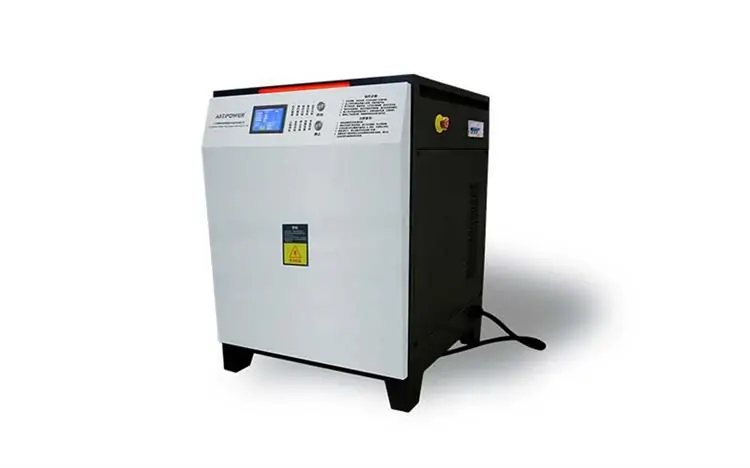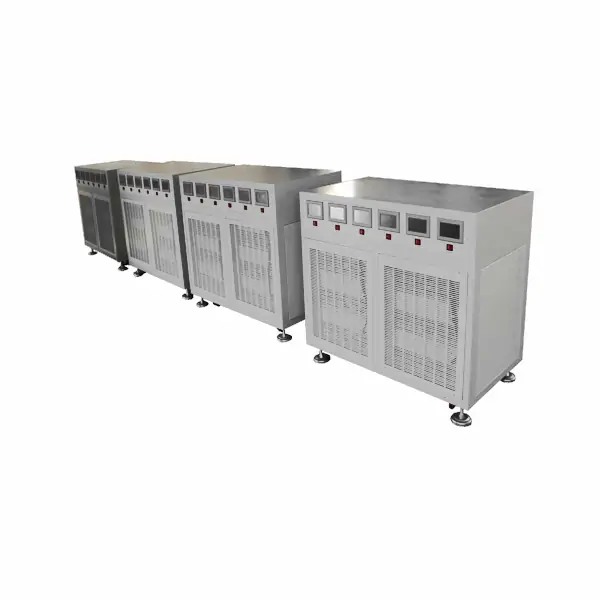Why now is the perfect time to electrify
The future is electric, with the proliferation of electric vehicles (EVs) and new lithium-ion battery technologies emerging. The material handling industry is no exception.
Certain countries, including France, the UK, Germany and Canada, will no longer sell petrol and diesel engine vehicles by 2030. In the US, states such as California are evaluating bans on gasoline-powered vehicles. As countries move to ban diesel-engined vehicles, there are concerns that IC-powered devices will also be banned in manufacturing facilities. Many manufacturers must consider their options now and find alternatives when regulations come into play.
According to the Industrial Truck Association (ITA), the number of internal combustion (IC) forklifts purchased annually decreased from 77,588 in 2019 to 61,161 in 2020. As the purchase of internal combustion forklifts decreases, the market for electric forklifts is increasing year by year. In 2019, 144,861 pieces of electric equipment were purchased. In 2020, 135,163 electric equipment will be purchased, and electrification will become the main source of power.
How to get ready for electrification
Preparing for the electrification of a forklift fleet takes some time to plan and organize. You need to decide what type of electrical equipment you need and which OEM brand is best for your operation. You must also consider other factors when you are deciding what type of electrical equipment your operation requires.
Getting ready for fleet electrification requires three steps:
Decide which battery is best for you
Planning Facility/Infrastructure Setup
training and safety

Decide Which Type of Electric Forklift Battery and forklift charger Is Best for You
If you rely on forklifts to move products, you know how important it is to have the right power for your fleet.
When it comes to electric forklifts, the two most commonly preferred batteries are lead-acid and lithium-ion. Choosing between the two is an important decision that can affect a company's efficiency and profits.
Whether it's an entire fleet or a single forklift, deciding which type of battery to purchase can be difficult. If you have had internal combustion forklifts for years, switching to lithium-ion technology requires a number of decisions such as voltage, capacity, battery size, charge rate, etc. to ensure your operation pays off. invest. After all, forklift batteries are an investment that directly impacts your day-to-day operations.
For some, choosing a lithium-ion or lead-acid battery depends largely on the purchase price. But there are more factors you should consider when determining which battery is best for your operation.
There are some substantial differences between lead-acid batteries and lithium-ion battery packs, such as:
energy efficiency
Lead-acid batteries lose capacity when charged, discharged, and when idle. Once they start discharging, their voltage drops at an increasing rate, so the forklift may become sluggish as the shift progresses.
Lithium-ion batteries maintain a constant voltage throughout the discharge cycle - saving up to 50% energy compared to lead-acid batteries.
cycle life
Lead-acid batteries have an average cycle life of 1,000 to 1,500 cycles.
Li-ion batteries, on the other hand, have a cycle life between 2,000 and 4,000 cycles. Depending on application and maintenance, this means Li-ion batteries typically last 2-3 times longer than comparable lead-acid batteries.
Safety
Lead-acid batteries use toxic lead and sulfuric acid and naturally generate heat when charging. Toxic fumes are emitted when heated. Ensuring that lead-acid battery charging spaces are ventilated is critical to the safety of warehouse workers.
Lithium-ion battery packs are hermetically sealed, preventing all materials from escaping the case. Since the lithium-ion battery pack is enclosed, it does not require a dedicated ventilated charging space.

Planning facility setup and warehousing logistics
Plan your charging station. This is a necessary step in setting up your facility for operations in the most efficient manner. Depending on the type of battery you choose, you may need to plan for a ventilated battery charging and changing area. Since lead-acid batteries produce toxic fumes, having a dedicated room with a ventilation system is critical to warehouse safety. Vented charging chambers are one of the major disadvantages of lead-acid batteries.
This step can be skipped for lithium-ion battery packs, as the technology does not require ventilation space to charge. Lithium-ion battery packs can use charging stations located anywhere in the warehouse because they don't need to be removed from a forklift to charge.
Lithium-ion batteries offer an excellent return on investment because they can be easily charged almost anywhere in your facility. Unlike lead-acid batteries, lithium-ion batteries do not need to be removed from the device to charge. They also don't require a separate storage area because they don't contain and emit the same hazardous chemicals as lead-acid batteries.
Staff training and regular inspections
It might seem obvious to train your staff and conduct regular forklift inspections, but it's a very important step. Never shortcut this requirement. No matter what power source your forklift uses, OSHA requires safety training and regular inspections to prevent workplace hazards. With certification, operators learn how to safely load and unload forklifts, move and stack pallets or loads properly, maintain equipment, and operate forklifts.
Internal combustion engine training looks different than Li-ion battery training because these power sources are maintained differently.
Part of training internal combustion engine operators is teaching them how to properly replace a propane tank. In addition to learning the proper procedures for handling propane, operators must learn to check equipment regularly to minimize the risk of propane leaks or malfunctions.
For lithium-ion battery packs, the types of training a forklift operator must undergo include:
Charging during breaks – training operators on charging practices during breaks will help maximize the cycle life of the battery
Handling the battery pack
Dispose of charging cables - make sure they follow the manufacturer's procedure for safely charging battery packs
Training forklift battery operators on such measures can prevent problems that could void the battery warranty.
The right lithium-ion battery supplier will ensure a successful transition
Fleet electrification requires extensive planning and education to ensure a successful transition. Understanding your operation and electric forklift requirements will help in the long run.
As you plan your transition to lithium-ion battery packs, be sure to spend some time preparing your fleet for electrification through these three steps:
Decide which battery is best for you
Planning Facility/Infrastructure Setup
training and safety
The right lithium-ion battery supplier will help you plan for fleet electrification and be with you every step of the way.
Next:Best 24v Forklift Lead Acid Battery Charger
Previous:Why Choosing the Right Forklift Battery Charger Is Important
Contact Person: Miss. Kiki
| WhatsApp : | +8617763224709 |
|---|---|
| Skype : | +8617763224709 |
| WeChat : | +8617763224709 |
| Email : | kiki@lifepo4-battery.com |